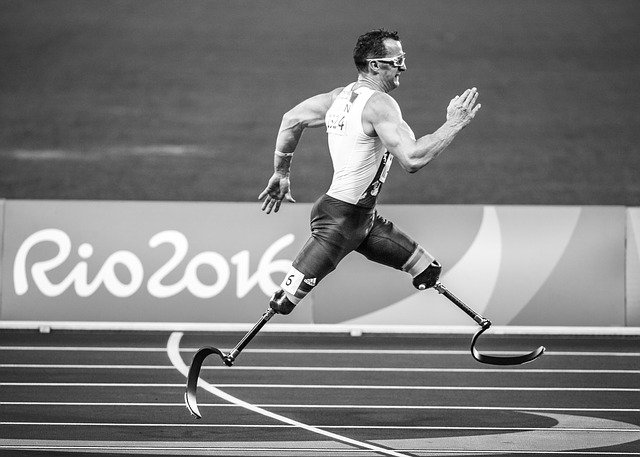Imagine you’re driving through the countryside on a beautiful day, but your car isn’t working. The gears keep getting stuck, and the gas pedal is jammed down.
It’s pretty scary. When you can’t shift gears, you can’t respond well to the bumps (or the boulders) in the road. So instead of enjoying the scenery, you’re constantly focused on what might go wrong and how you can prevent it.
That’s what anxiety was like for Antony. When he first sat down in my office, he looked calm. But his heart was pounding. His shoulders were tense and his stomach in knots. He had a mild headache, as he did almost every day, and he felt a little dizzy. And those were just the physical symptoms. His emotions and thoughts were out of control too. His doctor said that medically, he was fine.
Antony isn’t alone. Almost 20% of people in the U.S. struggle with anxiety every year, and it affects work, relationships, parenting, and inner peace.
For Antony, the problem was finding work. He was looking for a new job and wanted to nail his interviews, but at that point he could barely get through the day.
Neurofeedback for Anxiety
Here’s a key: stressful events are not the source of anxiety. It wasn’t the job search per se that was creating Antony’s anxiety. The job search was a challenge, but our brains are designed to rise to a challenge, and then get back to calm.
The problem was this: Antony’s brain was stuck on full-throttle – just like the gas pedal on the bumpy country road.
Neurofeedback for anxiety works directly with the brain’s regulating system to change your response to stressful events. In the process, you can learn to reduce and even eliminate anxiety.
The process is simple. You watch a video, which brightens and dims in response to your brainwaves. With feedback your brain can make a shift from worried to calm, often in the very first session. Antony rated his anxiety as an 8 out of 10 when he arrived. At the end of the first session he rated it a 3, and by the end of the second a 0.
To create lasting change, Antony continued with neurofeedback until the anxiety stayed low – even when something upsetting happened.
A Fast Approach for Anxiety Relief
Neurofeedback for anxiety is one of the most effective approaches I’ve found for calming the busy brain. Most people experience a noticeable calming in the first session, and a significant shift in symptoms in the first 5 to 10 sessions. Antony’s results are typical – about 85% of the clients I work with have experienced similar results.
Isabel, a professional in her forties, shifted from an erratic sleep schedule of 5 hours per night to a steady 6-8 hours of uninterrupted sleep.
Teresa, a college junior, felt so frozen by text anxiety that her grades were dropping fast. With neurofeedback for anxiety, she steadily improved and regained B’s in all her classes.
Peter, who had a high pressure sales job, found that neurofeedback for anxiety significantly improved his focus, concentration, memory, and overall work performance.
For each of these people, neurofeedback for anxiety helped them reduce or end their anxiety.
A New Sense of Calm
It worked for Antony. After a few months, he could maintain a new sense of calm both in and out of sessions. His job interviews felt like fun, and he landed his top choice job.
Remember the stuck gears and the faulty gas pedal? Now imagine what it would be like to repair the car. Remember, your brain in its natural state is designed to rise to challenges. Neurofeedback can help you learn to regulate your brain once again, so you’re not so focused on avoiding obstacles… and you can enjoy the beautiful spring afternoon.
* * *
Research on Neurofeedback for Anxiety
According to Joel Lubar, PhD at the University of Tennessee, “Neurofeedback treatment for many disorders such as ADHD, depression, anxiety… and has been shown to be highly effective with long term lasting results. There are hundreds of published studies and several books demonstrating this.”
If you’re interested in these studies, here are a few resources to get you started. Together they show that neurofeedback for anxiety is an “evidence-based and… efficacious treatment” (Hammond). The research addresses generalized anxiety disorder, worry, phobias, panic attacks, and PTSD.
Here’s the list:
-In The Body Keeps the Score, Bessel van der Kolk discusses neurofeedback and other body-based approaches to reducing anxiety and other effects of trauma by “rearranging the brain’s wiring.”
-Seburn Fisher demonstrates the effectiveness of neurofeedback for anxiety and developmental trauma in her recent book, Calming the Fear-Driven Brain.
-Egner and Gruzelier studied the effect of neurofeedback for anxiety related to performance for elite musicians at the London College of Music. Neurofeedback was compared with the effect of exercise, mental rehearsal, and the Alexander Technique. They found that “only the… Neurofeedback group resulted in enhancement of real-life musical performance under stress.”
-Garrett and Silver found that neurofeedback for anxiety helped college students with text anxiety. The study was randomized with two controls (one group received a different treatment, and one no treatment).
-Moore reviewed the literature on anxiety in 2000, and found that 7 of the 8 studies published at that time showed a significant reduction in anxiety.



